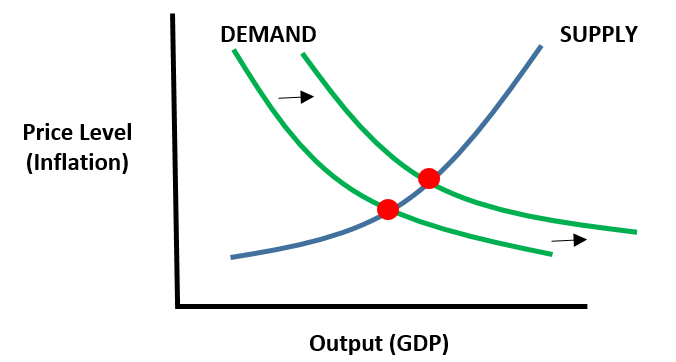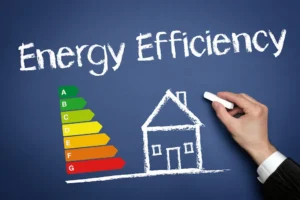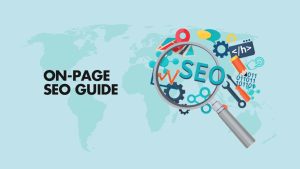
Inflation is an economic phenomenon that affects the purchasing power of individuals and the stability of economies worldwide. It refers to a sustained increase in the general price level of goods and services over a given period. While inflation is often considered as an inevitable part of economic growth, its causes are multifaceted and complex, influenced by various factors that impact both demand and supply within a market.
Understanding the causes of inflation is crucial for economists, policymakers, and ordinary citizens alike. Not only does it help anticipate future price movements and plan accordingly, but it also enables governments to implement appropriate monetary policies to manage inflation rates effectively. This article aims to explore the key drivers behind inflationary pressures by analyzing different economic theories and real-world examples.
Understanding the concept of inflation
Inflation is a concept that refers to the sustained increase in the general price level of goods and services over a period of time. Understanding the causes of inflation is crucial for policymakers and economists alike. One cause of inflation is excess demand, also known as demand-pull inflation. This occurs when the total demand for goods and services exceeds the available supply, leading to an increase in prices. Another cause is cost-push inflation, which stems from rising production costs such as wages or raw materials. When businesses face higher costs, they pass them on to consumers by increasing prices.
Furthermore, expectations play a significant role in driving inflation rates. If people expect prices to rise in the future, they may adjust their behavior accordingly by purchasing more now, leading to increased demand and potentially higher prices. Additionally, changes in monetary policies can impact inflation as well. An expansionary monetary policy that increases the money supply can stimulate economic growth but also lead to higher levels of inflation if not properly managed.
Definition:
Inflation is defined as a sustained increase in the general price level of goods and services over a period of time. It is often measured by calculating the annual percentage change in the Consumer Price Index (CPI), which reflects the average price increase experienced by consumers for a basket of commonly purchased goods and services. The causes of inflation can be attributed to various factors, including both demand-side and supply-side factors.
On the demand side, one key cause of inflation is excessive aggregate demand relative to aggregate supply. When there is an increase in consumer spending or investment, it leads to higher demand for goods and services. If production cannot keep up with this increased demand, prices rise due to scarcity. Additionally, expansionary monetary policies implemented by central banks can also contribute to inflation. By increasing the money supply through measures like lowering interest rates or quantitative easing, more money enters circulation, causing an excess of money chasing too few goods. These are just some of the causes behind inflation; however, it’s important to note that different types of inflation may have distinct underlying causes.
Explaining what inflation is and its impact
Inflation is a persistent increase in the general price level of goods and services in an economy over a period of time. It is primarily caused by an imbalance between the supply and demand for money, which leads to increased prices. One of the main causes of inflation is excessive growth in the money supply by central banks. When there is too much money in circulation, it reduces its value, causing prices to rise. Another cause of inflation is cost-push factors, such as increases in wages or raw material costs. When businesses face higher expenses, they often pass on these costs to consumers through higher prices. Additionally, demand-pull factors can also contribute to inflation. This occurs when consumer spending exceeds the available supply of goods and services, leading to increased competition among buyers and driving up prices.
The impact of inflation can be both positive and negative depending on various factors. On one hand, moderate levels of inflation can encourage consumer spending as people may be motivated to buy now rather than later when prices are expected to rise further. However, high levels of inflation erode purchasing power as people need more money to buy the same amount of goods or services.
Demand-pull inflation:
Demand-pull inflation occurs when there is an increase in aggregate demand, leading to a rise in the general price level. This type of inflation is typically caused by factors such as increased consumer spending, government expenditure, or investment. When consumers have more disposable income and are willing to spend it on goods and services, businesses respond by increasing their prices to meet the growing demand.
Another cause of demand-pull inflation can be government policies aimed at stimulating economic growth. For example, if the government increases its expenditure on infrastructure projects or provides tax incentives for businesses to invest, it can boost aggregate demand and result in higher prices. Additionally, changes in monetary policy can also contribute to demand-pull inflation. When central banks lower interest rates or engage in quantitative easing measures, it becomes easier for individuals and businesses to borrow money and spend it on various goods and services. Overall, demand-pull inflation is driven by an increase in overall demand within an economy. Whether due to increased consumer spending, government policies promoting economic growth, or changes in monetary policy, these factors lead to a rise in prices as businesses strive to meet rising demands for their products or services.
Exploring how excessive demand drives up prices
One of the main causes of inflation is excessive demand in the economy. When there is a high level of demand for goods and services, it often leads to an increase in prices. This occurs because when consumers are willing to pay more for a product, businesses can raise their prices without losing customers. As a result, this excess demand drives up the overall price level in the market. Excessive demand can be caused by various factors such as increased consumer spending power due to wage growth or government stimulus packages. When people have more money to spend, they tend to buy more goods and services, creating a surge in demand that outpaces supply. Additionally, excessive demand can also be fueled by changes in consumer preferences or trends that lead to sudden spikes in popularity for certain products or industries.
The impact of excessive demand on prices can be seen across different sectors of the economy. For example, during times of high housing demand, such as when interest rates are low or there is a population boom, house prices tend to skyrocket. Similarly, when there is a surge in global oil consumption or geopolitical tensions disrupt supply chains for oil production, it results in an increase in oil prices worldwide. Overall, excessive demand plays a significant role in driving up prices and contributing to inflationary pressures within an economy.
Cost-push inflation:
Cost-push inflation occurs when there is an increase in the cost of production for goods and services, resulting in higher prices for consumers. Several factors can contribute to cost-push inflation. One major cause is an increase in wages or labor costs. If workers demand higher wages, businesses may have to raise their prices to cover the added expense. Another factor that can lead to cost-push inflation is an increase in the cost of raw materials or inputs used in production. For example, if the price of oil rises significantly, it can drive up transportation costs and impact various industries dependent on fuel, such as manufacturing and agriculture.
Additionally, changes in government policies or regulations can also contribute to cost-push inflation. For instance, if the government imposes stricter environmental standards on businesses, they may have to invest in expensive equipment or modify their operations, leading to increased production costs that are then passed on to consumers through higher prices. Overall, understanding the causes of cost-push inflation is crucial for policymakers and economists as they try to manage and stabilize economies by implementing appropriate measures based on these underlying factors.
Discussing how increased production costs result in inflation
One of the primary causes of inflation is increased production costs. When businesses experience an increase in their production costs, they are often forced to pass these expenses on to consumers in the form of higher prices for goods and services. This can be due to various factors such as rising wages, higher raw material prices, or increased energy costs.
For example, if there is a sudden surge in oil prices, it directly affects transportation costs, which in turn impacts the cost of producing and delivering goods. As a result, businesses may need to raise their prices to maintain profitability. Similarly, if labor costs rise due to minimum wage increases or strong demand for skilled workers, businesses may have no choice but to increase the prices of their products or services.
Monetary factors:
One of the primary monetary factors that contribute to inflation is an increase in the money supply. When there is more money circulating in the economy, consumers have more purchasing power and are willing to spend more. This increased demand for goods and services can lead to an increase in prices, as businesses take advantage of this higher level of consumer spending.
Another significant monetary factor that causes inflation is excessive government spending. When governments spend beyond their means, they often resort to printing more money or borrowing, which increases the overall money supply in the economy. This influx of money can result in higher prices as businesses adjust their prices to account for the increased availability of funds.
Analyzing the role of money supply in causing inflation
One of the primary causes of inflation is an increase in the money supply. When there is an excessive supply of money in the economy, it leads to a decrease in the purchasing power of each individual unit of currency. As a result, prices for goods and services tend to rise. This phenomenon can be observed when central banks engage in expansionary monetary policy by increasing the money supply through actions such as lowering interest rates or purchasing government securities.
The relationship between money supply and inflation can be explained through the quantity theory of money. According to this theory, when there is an increase in the amount of money circulating in an economy without corresponding increases in production or output, there will be more money chasing after relatively fewer goods and services. This excess demand puts upward pressure on prices, leading to inflation.
Conclusion:
In conclusion, inflation is a complex phenomenon that can be caused by various factors. These include an increase in production costs, such as wages and raw materials, which are then passed on to consumers through higher prices. Additionally, government policies that result in excessive money supply can also contribute to inflation. Global events and market forces, such as changes in oil prices or currency fluctuations, can further impact inflation rates. It is important for individuals and policymakers alike to understand the causes of inflation in order to make informed decisions and take appropriate measures to manage its effects. By actively monitoring economic indicators and implementing sound fiscal and monetary policies, we can strive to maintain stable prices and promote sustainable economic growth.
ALSO READ / what is the benefits of lemon in water





